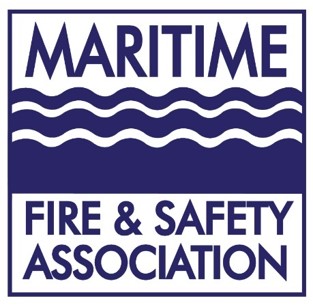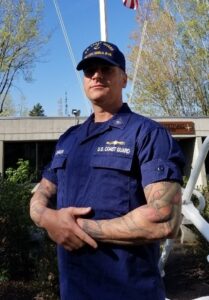NON-FLOATING OIL (NFO) SPILL RESPONSE WORKSHOP
Hosted By

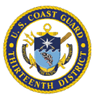





DATES: June 16 – 17, 2021
TIME: 9:30 a.m. to 3:00 p.m.
LOCATION: Online
Our regional understanding of risks associated with non-floating oil spills has grown since the Kalamazoo River Oil Spill 2010. Over the past several years we have updated the Northwest Area Contingency Plan (NWACP), federal and state regulations, and our Geographic Response plans to address risks to sensitive natural, cultural, and economic resources. Incorporating local knowledge into the response and establishing partnerships is key to our success.
WHO SHOULD ATTEND?
Regional responders, contingency plan holders, State and Federal Agencies, Tribes, spill management teams, and the public.
Agenda
• “Overview of Preparedness, Response, and Non-Floating Oil Spill Risks on the Columbia River” Dave Byers, Manager of the Spill Response, Washington State Department of Ecology
• “Oil Properties & Crude Oil Basics” Richard Franklin, Federal On-Scene Coordinator, EPA Region 10
• “Basics of Non-Floating Oils” Faith Knighton, Scientific Support Coordinator, NOAA Office of Response and Restoration
• “Preparedness for a Non-Floating Oil Spill Response – An Overview of Updates to the Region’s Geographic Response Plans (GRPs)” Sonja Larson, Response Technology Specialist, Washington State Department of Ecology
• “Safety for Contaminated Water Diving” Kris Leefer, Unit Diving Officer, EPA Region 10
• “Identifying and Monitoring Worker Hazards Related to Releases of NFO” Angie Perez, Senior Toxicologist, CTEH & Allison Schmidt, Associate Health Scientist, CTEH
• “Community Air Monitoring and Emergency Responses” David Burford, Senior Project Scientist, Weston Solutions
• “NFO Response – A Practical Approach with an Eye Toward Emerging Technology” Kari Walker, Co-Managing Member, Induced Polarization Associates
• “Inland Waterway Oil Spills – Developing Tools for NFO Containment” Nic Winslow, Manager of HAZMAT Planning, BNSF & Cody Harris, President, Whitewater Rescue Institute
• “A Response Guide for Sunken Oil Mats (SOMs): Formation, Behavior, Detection, and Recovery” Dr. Jacquelin Michel, Research Planning, Inc.
• “Enbridge Pipeline Release” Greg Powell, EPA Emergency Response Team
• “Experiences on Asphalt Spills” Frank Burg, Division Operations Leader, Owens Corning
• CHF William (Ian) Johnson, USCG – Federal On-Scene Coordinator
• Charles Kennedy, Oregon Department of Environmental Quality and Dave Byers, Washington Department of Ecology – State On-Scene Coordinators
• Ernie Schnabler, Cowlitz County Department of Emergency Management – Local On-Scene Coordinator
• Chad Thompson, Maritime Fire & Safety Association – Responsible Party Incident Commander
• TBD, Tribal On-Scene Coordinator
Speaker Bios


David Burford is a Senior Project Scientist with Weston Solutions Inc, with 15 years of experience. He graduated from Oregon State University with a Bachelor’s degree in Chemistry and has worked as an analyst in an environmental laboratory. For the last 10 years, David has been supporting USEPA in Region 10 as an emergency response contractor. In addition to leading teams and developing data collection programs, he assisted in the development of Section 9418 of the Northwest Area Contingency Plan regarding Community Air Monitoring. David lives in Seattle, WA with his family: 3 humans, 2 cats and 1 dog.
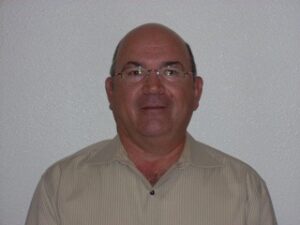

Frank Burg is the Division Operations Leader for the 12 US Asphalt Plants within the Owens Corning Roofing Division, of which, 7 of these are OPA facilities.
Prior to his current role, Frank was the Plant Leader for the Portland Operations for 31 years, accountable for ensuring the achievement of the business’ manufacturing strategies and goals. Responsibility also included providing a safe and healthy environment for employees as well as the local community. During this time Frank worked with the Portland Clean Rivers Cooperative and the Portland Merchants Exchange.
During Frank’s 44-year career with Owens Corning he was responsible for Marine Transfer Operations in Minneapolis, MN (late 1970’s), Chicago, IL (early 1980’s), and Portland, Oregon (1984 to 2015).
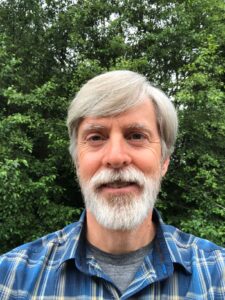
![]()
David Byers is a chemist and the Spill Response Manager for the Washington State Department of Ecology, managing 24-hour hazardous materials response operations from six regional offices statewide. He oversees Ecology’s statewide spill response and cleanup activities to over 4,300 oil spills, hazardous material releases, and clandestine drug labs reported each year. David also oversees Washington State’s Oil Spill Natural Resource Damage Assessment, Restoration, and Hazmat/Firefighting Equipment Grant units. Prior to working for Ecology, David supported the US Environmental Protection Agency Hazardous Materials Emergency Response Unit in Region 10 as the Superfund Technical Assessment and Response Team Program Manager. Throughout his career, David has been responsible for responding to over 85,000 oil and hazardous materials spills, including over 12,000 illegal drug manufacturing facilities. Concurrent with his work at Ecology, David served his community for 24 years as Battalion Chief and Chief Medical Officer for the North Olympia and South Bay Fire Departments in Thurston County.
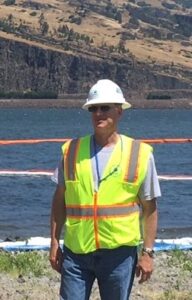

Richard serves as a Federal On-Scene Coordinator for EPA Region 10, and is based out of EPA’s Portland, Oregon office. Richard’s responsibilities include responding to and managing oil spills and hazardous materials responses, conducting site cleanups, and conducting EPA’s SPCC and FRP inspections in Oregon, Idaho, and Washington. He works nationally in developing and implementing oil regulatory policy, and conducting workshops and courses on hazardous materials and oil spill response and prevention. Richard has 27 plus years of experience across a wide variety of emergency responses and in SPCC/FRP policy and inspections. He has taken a lead role in many of EPA’s largest oil spill responses and disasters such as the Columbia Shuttle, the Murphy Oil Spill, and Hurricanes Katrina, Rita, Gustav and Ike. More recently, Richard has been involved as a lead Federal On-Scene Coordinator for incidents in the Pacific Northwest, such as the Prudhoe Bay Oil Well #3 site, the Mosier Bakken Unit Train Derailment, and many other hazmat and oil spill responses. During his first fifteen years with EPA, Richard responded to many oilfield, pipeline, and hazmat incidents, and inspected petroleum facilities along the Gulf Coast region and Alaska. Richard grew up and worked in the Texas oilfields before coming to EPA. He has a Master’s Degree in Science (Geology) from the University of Texas at Arlington and a Bachelor’s Degree in Music Education from University of North Texas.
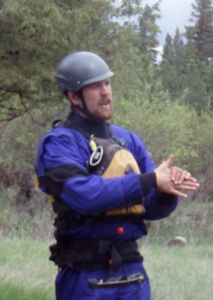
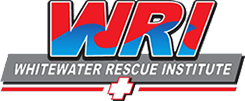
Cody Harris is President and Co-Founder of the Whitewater Rescue Institute and WRI Environmental Response. He has 28 years of experience working on rivers as a search and rescue team member, river guide, kayak instructor, emergency medical technician, technical rescue instructor and environmental emergency responder.
Since 2009, Cody has responded to numerous inland oil spills, where he and his team have assisted in the safe transport of workers via jet boat, developed safety plans for on water operations, and deployed containment boom for oil recovery.
In addition, Cody has developed curriculum and training guidelines for Swiftwater Spill Response trainings for Oil Spill Response Organizations (OSROs). He has developed Geographic Response Plans for clients and conducted multiple functional exercises and equipment drills on fast water locations.
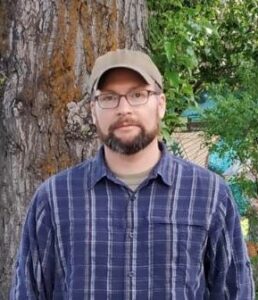
Charles Kennedy is an On-Scene Coordinator for Oregon’s Department of Environmental Quality. Before coming to Oregon DEQ, Charles worked for Tetra Tech in San Francisco, Montana DEQ, Maine DEP and Department of the Interior in New Mexico. Charles’ diverse work experience includes stable isotope lab work, greenhouse gas, chemical warfare agent monitoring, on-water work for diluted bitumen oil release, and abandoned mine reclamation in the Mojave Desert. Charles studied environmental science at the University of Colorado at Boulder. Charles lives with his wife, two kids and two dogs. Outside of work, Charles enjoys running and hiking in eastern Oregon and traveling to Europe and Asia. Charles’ academic interests outside of work include the earth sciences and cosmology.
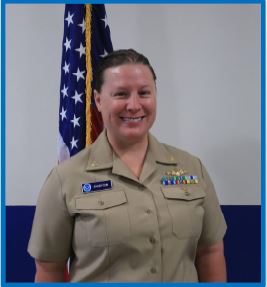
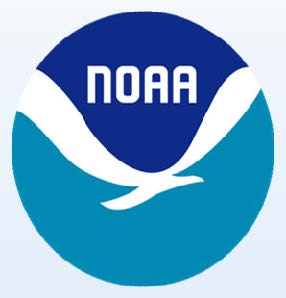
LCDR Faith Knighton is a Scientific Support Coordinator for the Pacific Northwest with the NOAA Office of Response and Restoration. She supports the USCG District 13 Federal On-Scene Coordinator for oil and hazardous waste emergency response and is a scientific liaison with federal, state, local, and tribal agencies. She has served in the NOAA Corps since 2007 and holds a Master’s degree in Geography and Ocean Policy from the University of Hawai’i and a Bachelor of Science degree in Biology from Florida State University. Faith is based out of the NOAA Western Regional Center located in Seattle, Washington.

![]()
Sonja Larson is a Response Technology Specialist for the Washington State Department of Ecology Spills Prevention Preparedness and Response Program. The statewide position ensures that Washington achieves the highest standards of protection through requiring Best Achievable Protection (BAP) in oil spill preparedness for regulated entities. Her role includes reviewing technologies, and lessons learned from spills and drills, and updating the regulations at five year intervals. Sonja also worked for three years as the Contingency Plan Review Supervisor. In this role she supervised a team that reviewed oil spill contingency plans for regulated vessels, facilities and pipelines and developed Geographic Response Plans (GRPs).


Kris Leefers is the Unit Diving Officer of the EPA Region 10 Dive Unit. She oversees all diving safety matters for the Unit, including planning and preparation for contaminated water and cold water diving. She is also a member of the national EPA Diving Safety Board. Kris has been an active scientific diver for EPA for the past 8 years, specializing in contaminated water diving. Kris is a certified scientific diver and divemaster and maintains HAZWOPER certification. She has experience in fresh and salt water environments, wet suit and dry suit diving, full-face mask diving, altitude diving, surface supply diving, tethered diving, and contaminated water diving. In her spare time, she enjoys diving in cleaner waters.
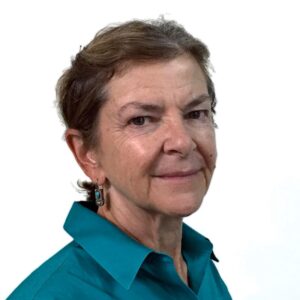
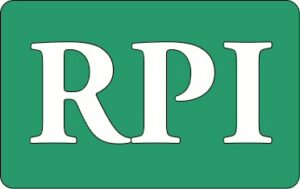
Dr. Michel is one the original founders of Research Planning, Inc. (RPI) and has been President since 2000. Dr. Michel was part of the original team of RPI scientists who pioneered much of the early research on the impacts of spills and response actions on coastal and terrestrial ecosystems. This work, mostly sponsored by NOAA, has involved multidisciplinary studies of oil and chemical spill and response impacts and the development of strategies to mitigate these impacts during the response.
She is one of the leading scientists in oil spill response, having been part of the NOAA Emergency Response Division team since 1978, providing scientific support to the USCG for 50-100 spills per year. She is the author of 100s of technical reports and peer-reviewed publications on impacts of oil spills and selection of appropriate response options, including mechanical, manual, chemical, and in situ burning tactics. She has quantified injury to natural resources for Trustee agencies on 33 Natural Resource Damage Assessments (NRDA) since 1985. She often manages the Shoreline Cleanup Assessment Technique (SCAT) program during a response. Other oil spill and response specialties include in-situ burning, submerged/sunken oil, chemical countermeasures, and seafood safety.
She has written over 250 technical reports and publications, including 45 peer-reviewed journal articles and ten chapters in books.
She has served on five National Academies committees that addressed topics related to oil spill science and response since 1999 and was the Chairman of two committees:
- Spills of Nonfloating Oil (1999)
- Oil in the Sea (2002)
- Spills of Emulsified Fuels: Risks and Response (2001), Chair
- Committee on Understanding Oil Spill Dispersants: Efficacy and Effects (2005), Chair
- Spills of Diluted Bitumen from Pipelines: A Comparative Study of Environmental Fate, Effects, and Response (2016)
She has co-authored five books on the coastal geology and ecology of different coastal states, targeted to the layperson living on or visiting the coast: South Carolina (2008), Central California (2010), Georgia (2013), Southern Alaska (2017), and Oregon/Washington (2019).
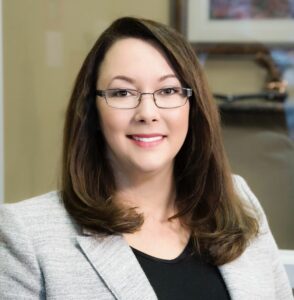
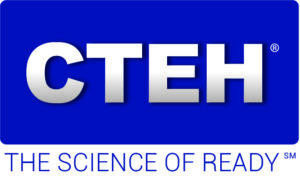
Dr. Perez has over 15 years of experience in applied toxicology, exposure assessment, and human health risk assessment. Dr. Perez completed her PhD in Toxicology at Oregon State University where her research included the study of the fate and transport of chemicals in environmental systems. Dr. Perez has conducted field research in soils and waters, including the Portland Harbor Superfund Site. She has over 40 published articles and abstracts on the topics of asbestos, triclosan, metals, phthalates, styrene, volatile organic chemicals (VOCs), and decision analysis tools for chemical hazard prioritization. Dr. Perez has deployed as a responding toxicologist to several chemical emergencies and has most recently served in the role of incident safety officer in December 2020.

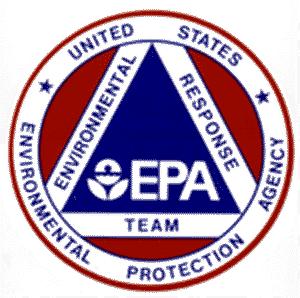
Greg Powell has worked in the USEPA emergency response program since 1984. He has responded to numerous oil spills and other environmental emergencies. In addition to emergency response, Mr. Powell has worked on Superfund sites throughout the United States. He has held positions as a Remedial Project Manager (RPM) and On Scene Coordinator (OSC) in EPA Region IV. Mr. Powell has been an Environmental Scientist with ERT since 1989 and is stationed in Erlanger, Kentucky. Mr. Powell directs and instructs in the ERT’s Oil Response Training (ORT) courses. These hands on courses are held throughout the United States to train Federal, State and local responders to respond to oil spill on inland waters.


Ms. Schmidt completed her MS degree in Environmental Toxicology at Clemson University where her research focused on the mechanisms of mixture effects of common contaminants on aquatic organisms. Her role at CTEH includes supporting toxicology and litigation projects, data management, and risk assessment. Ms. Schmidt has responded to several chemical emergencies, where she has conducted air monitoring and field sampling and assisted in the preparation sampling and analysis plans.
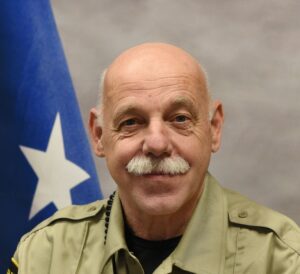
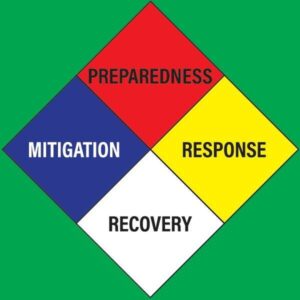
Ernie has spent 20 years in Emergency Management and incident response, with the last 10 as the Emergency Management Director in Cowlitz County. Prior to that, he spent 20+ years in the military and private industry sector.
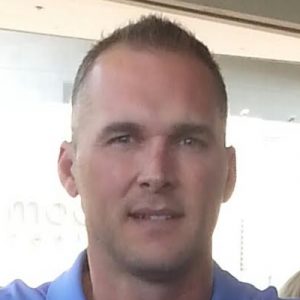
Chad Thompson retired from the US Coast Guard in 2017 after 25 years. Much of his career was spent conducting search and rescue, maritime law enforcement and environmental response. During his last tour of duty he qualified as a Federal On-Scene Coordinator and Pollution Responder covering Oregon and parts of Washington. Additionally, Chad is a contractor for the Department of Agriculture instructing leadership courses to wildland firefighters throughout the North West

Ms. Walker is an oceanographer with over 20 years of experience planning, conducting, and managing scientific measurement programs in marine and freshwater environments. Her expertise lies in scientific instrumentation, quality control of field operations and environmental measurements, and data QA/QC, visualization, and interpretation. Kari has performed field work in and served as project and program manager for large, interdisciplinary projects in a wide range of environments, and both understands and has overcome many difficulties associated with working in extreme environments. She holds a Bachelor of Arts degree in Oceanography and an MBA from the University of Washington.
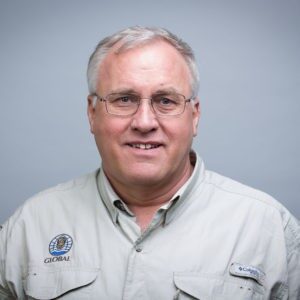
Mr. Walsh has more than 40 years of experience in marine salvage and emergency response, filling a variety of roles including Incident Commander, Project/Operations Manager and Salvage Master. Mr. Walsh’s project management experience includes serving in the Command Post as Project Manager and Salvage Representative for numerous operations with the US Coast Guard, including the assessment and defueling of the Princess Kathleen and General Zalinski shipwrecks. He served in the Command Posts for Hurricanes Michael, Harvey and Irma overseeing daily operations, coordinating subcontractors, and stakeholders.
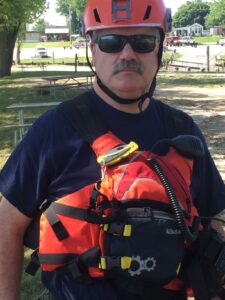
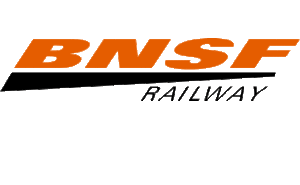
Nic Winslow is the Manager of Hazmat Planning for The BNSF Railway Company. His territory includes a region of 28 states and British Columbia.
Mr. Winslow specializes in oil spill contingency preparedness planning and emergency response tactics for hazardous materials and oils spills into interior waterways.
Mr. Winslow has developed a Technician-Level inland fast water spill response program designed to train railroad and Oil Spill Response Organization (OSRO) first responders to safely deploy oil response equipment in adverse conditions in fast water rivers and inland lakes. He is working with OSROs/PRCs to develop Non-Floating Oil tactics and equipment to contain and recover oils that have the potential to sink or submerge.
Mr. Winslow has over 30 years of experience managing environmental and emergency response projects in the petroleum refining and railroad industries. He has a BS degree in geology/hydrogeology from Western Washington University.
Abstracts
This presentation will highlight the response system in place on the Columbia River and provide details of our regional response posture. Additionally, the presentation will highlight current trends in oil movement, oil spill risks, and oil types present within the planning area. Summary details of a historic non-floating oils response on the Columbia River – the Mobil Oil Spill – will also be highlighted.
The intent of this brief workshop module is to refresh and educate the participant on some basics of crude and heavy oils. Instructional materials will include information on: characteristics of EPA Oil Groups III – V, a few selected physical properties of oil which may bear on its fate and transport in a spill, and thus response tactics, and some specific examples of medium and heavy oils which are transported, stored, and handled throughout the mid and lower Columbia River.
NOAA modeling tools and Scientific Support Coordinator support in the event of a non-floating oil spill on the Columbia River.
The presentation will provide an overview of the recent updates to our regions Geographic Response Plans (GRPs) to address emerging risks. Historically GRPs have been developed to minimize impacts to sensitive cultural, environmental, and economic resources at risk at the water’s surface and along shorelines. As our understanding of the risks of potential non-floating oils has increased, identification of sensitive species is no longer limited to surface and shoreline species but also includes water column and benthic species at risk from sunken, submerged, and non-floating oil spills. The updated plans also include information about water way depths, water density, sediment load, seafloor or river bottom types, and response considerations and constraints based on those factors.
This presentation will address common safety considerations for divers, with a focus on special considerations for contaminated water diving. General safety topics will include OSHA regulations and general diving risks. Contaminated water diving topics will include personal protective equipment for divers, personal protective equipment for surface support, exclusion zones on vessels, and decontamination procedures.
CTEH works with clients across multiple industries to prepare for and respond to chemical releases and other industrial emergencies. During an accidental oil release, it is imperative to quickly identify, monitor, and document potential hazards, such as hazardous atmospheres, that workers may encounter from the release and mitigation efforts. CTEH emergency response scientists identify hazardous compounds for air monitoring, determine action levels, and collect and integrate data with other stakeholders in the response. The rapid identification, monitoring, and documentation of potential hazards protects worker safety, informs decisions on community health risks, and allows timely communications to stakeholders and the public regarding the response.
An overview about Community Air Monitoring in Region 10, including purpose, how it differs from worker health and safety monitoring, and a discussion about action levels. The presentation will also provide a brief overview of Section 9418 of the Northwest Area Contingency Plan: Emergency Response Community Air Monitoring. Information will also be provided about Region 10 EPA capabilities and case studies from recent responses where Community Air Monitoring was deployed.
Recovery of non-floating oil requires a practical approach that is developed during each spill based on the unique characteristics of the spilled product and the surrounding environment. Many factors are involved in determining the best removal strategy, such as viscosity, volume, subsea features, water temperature, water depth, and current. When all of these factors are evaluated, the best recovery strategy typically becomes evident. This discussion will focus on the operational lifecycle of a non-floating oil spill, with particular attention paid to the most difficult part of any NFO spill; “where is the oil now”. We will discuss Induced Polarization, or IP, as an emerging technology that, when coupled with sonar surveys, can narrow the search for spilled non-floating oil.
This presentation will include a summary of Non-Floating Oil (NFO) containment equipment and shoreline protection options for multi-inland water ways and options for deployment with conventional floating boom during the initial stages of an oil spill incident. BNSF Railway, in collaboration with OSROs and equipment vendors, are in the initial stages of developing subsurface NFO containment equipment options for use to contain oil spills in shallow inland waterways. This presentation outlines the development and testing of several types of subsurface containment and deflection barrier panels (5 feet wide by 50 feet long) fabricated for deployment testing purposes. We discuss NFO subsurface barrier options; impermeable, perforated and woven fabric material types; anchors systems; and installation procedures to allow deployment in subsurface shallow water settings (up to 10 to 15 feet below the water surface).
Most oil spill response strategies are based on the concept that oil floats. However, oil does not always float. Sometimes it is suspended in the water column; sometimes it sinks to the bottom of the water body; and sometimes it does all three: floats, suspends, and sinks.
Oil can sink and form sunken oil mats because:
- The initial density of the oil is greater than that of the receiving water body (this process is more common in freshwater);
- The initial density of the oil is lower than that of the receiving water body but the density of the oil increases as the floating oil weathers; or
- Interaction with sediment (mostly sand) that causes the oil-sediment mixture to become heavier than the receiving water body.
This guide addresses the third type of sunken oil–oil that has mixed with enough sand either after stranding on a sand beach or mixing with sand suspended in the water column in the nearshore to cause the oil to sink and form bulk oil in the form of Sunken Oil Mats (SOMs). Following the Deepwater Horizon oil spill, SOMs (which were called submerged oil mats) formed across the Gulf Coast region occurred most commonly along the sand beaches of the Panhandle of Florida and coastal Alabama. SOMs were a constant source of reoiling of the beaches during the four years of the Deepwater Horizon oil spill response, and chronic reoiling has continued for years. The challenge of detecting and removing these SOMs led to more research into the formation process and persistence of SOMs.
This operational guide includes: 1) a table of case histories where SOMs formed after oil spills; 2) a summary of the literature on SOMs; 3) a description of conditions necessary for SOM formation and persistence; 4) the most effective survey methods to detect SOMs; and 5) the most effective removal methods that also minimize environmental impact.
In July, 2015 over 20,000 barrels of oil spilled from a pipeline in Marshall, Michigan. This spill impacted 38 miles of the Kalamazoo River. The spill consisted of a heavy crude/ diluent mix (Dilbit). Dilbit is a mix of bitumen and a hydrocarbon diluent. The initial response focused on deploying containment boom and multiple skimming locations. Air quality issues were of concern during the first weeks of the response due to potential for benzene exposures associated with the volatilizing diluent. The characteristics of the spill evolved as the diluent volatilized from the crude oil and a heavier crude matrix resulted. The less buoyant crude oil resulted in the formation of oil particle aggregates and suspended crude within the water column. New oil tracking strategies and recovery techniques were employed.
This presentation will review Owens Corning’s only spill that resulted in a release to a navigable water way in Morehead City, North Carolina in August 1985.
This presentation will confirm that the Group V did behave as we know today. It floated, and with time, turbulence, and sediment, it sunk.
This presentation will show how released materials can trap gasses and float, and because of the thermal plastic properties of Group V Oils, then trap sediments and sink.
Owens Corning’s experience is that Group IV and Group V oils often are not what they seem.
The NW Area Contingency Plan Section 9412 references API technical report 1154-1 and 1154-2
Group IV and Group V Oils as a Non-Floating Oils Spill Response Tool, and the last point in the presentation is to follow Section 9412, and include API gravity conversion for temperature into the planning section of ICS to assess the possibility for different behaviors.
This facilitated tabletop exercise will simulate a Unified Command which has been established in response to a spill of non-floating oil on the Columbia River. The UC will review a Response Tactic proposal for the Scenario that involves considering Environmental and Cultural Resources at Risk; balancing the Benefits of removing the sunken oil with the potential impacts that the available Response Tools may have.
